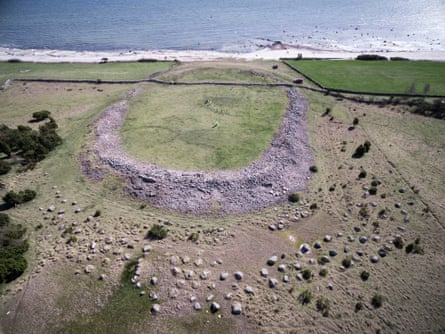
On the south-eastern island of Oland, Swedish archeologists found evidence of a massacre of the 5th century.
The team writes about the 1,500-year-old attack on Sandby borg in a paper published in the journal Antiquity.
Dozens of corpses have been found in the walled fort, their bodies left to rot where they fell.
All of the victims were killed with “brutal force”, team leader Helena Victor said. Some victims were found inside houses, others in the streets.
The archaeologists discovered decapitated bodies, blunt force trauma wounds to victims’ heads, and even one person who seemed to have fallen into a fireplace in his final moments.
Even the corpse of a newborn was found among the dead, suggesting nobody was spared, the authors say.
The perpetrators of the massacre are not known, but it took place during a turbulent period of intense migration when the Western Roman Empire was collapsing and the Huns invading. The Baltic island of Oland was never under Roman rule.

The walled fort at Sandby Borg
Local authorities asked staff at the Kalmar Lans Museum to examine the area after treasure hunters found items at the site. The first dig lasted only 3 days, but after the discovery of the walls of houses, the team quickly found human remains.
Ms Victor says the bodies in the houses raised alarm bells, as historically corpses were usually cremated – and certainly were not left in people’s homes.
“You don’t find people lying around in houses,” Ms. Victor told the BBC. “[People] don’t do it today, and didn’t do it then.

“While villagers normally lived outside the walled fort, they would shelter there in times of danger. Between 200 and 250 people are thought to have lived in the fort, and Ms. Victor says it does not look as if they defended themselves.
“People seem to have been killed without defending themselves,” said team leader Helena Victor. “It seems like treason.”She suggests someone may have left a door open and “let them in at night”.








